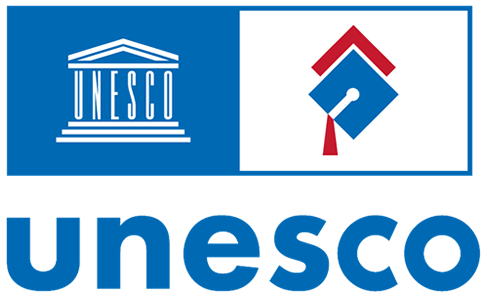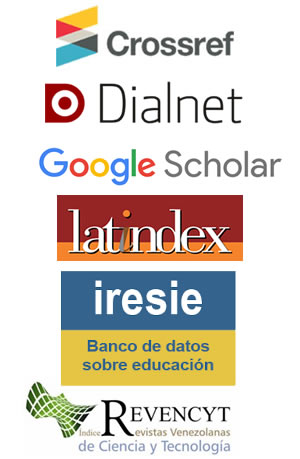Internacionalización del currículo: una respuesta democratizadora a las desigualdades resultantes de la movilidad académica elitista
Resumen
La internacionalización del currículo cobra relieve con la pandemia como una alternativa a la movilidad, la cual brindaba solo a una elite la posibilidad de ser atravesados por una experiencia internacional. El debate sobre internacionalización del currículo tiene 20 años, pero la coyuntura lo puso en el centro de la agenda universitaria de internacionalización. Este artículo recorre su evolución conceptual y presenta tres dimensiones de análisis que se requieren para poder avanzar en su comprensión e implementación. La dimensión disciplinar y la individual son las fuerzas motoras de la internacionalización del currículo al interior de las universidades. Ambas dimensiones no suelen ser exploradas con tanta profundidad en los estudios de internacionalización del currículo, los cuales priorizan la dimensión institucional, Aquí se describen las tres dimensiones en detalle y se enfatiza la necesidad de lograr una articulación entre todas, para ir más allá de la enunciación de acciones exitosas de internacionalización del currículo, que por su fragmentación, quedan imposibilitadas de réplica y/o de supervivencia a lo largo del tiempo.
Citas
Becher, T. (1993). Las disciplinas y la identidad de los académicos. Revista Pensamiento Universitario, 1(1), 56-77.
Beelen, J. & Leask, B. (2011). Internationalization at home on the move. Dr. Josef Raabe Verlag.
Beneitone, P. (2019). Internacionalización del currículo: estudio de casos en universidades argentinas. [Tesis de Doctorado]. FLACSO. https://repositorio.flacsoandes.edu.ec/handle/10469/16436
Bond, S., Qian, J. y Huang, J. (2003). Role of faculty in internationalizing the undergraduate curriculum and classroom experience. Canadian Bureau for International Education.
Brandenburg, U. y de Wit, H. (2011). The end of internationalization. International Higher Education, 62(1), 15-17.
Carroll, J. y Ryan, J. (2005). Teaching International Students: Improving Learning for All. Abingdon and New York: Routledge.
Caruana, V. & Hanstock, J. (2008). Internationalising the curriculum at the University of Salford: From rhetoric to reality. En C. Cashel, & A. McKenzie (eds.), The global university: The role of senior managers (pp. 31-35) BU/DEA.
Caruana, V. (2010). The relevance of the internationalised curriculum to graduate capability: the role of new lecturers’ attitudes in shaping the ‘student voice’. En, E. Jones (ed) Internationalisation and the Student Voice (pp. 30-43). Routledge.
Childress, L. (2010). The Twenty-first Century University: Developing Faculty Engagement in Internationalization. Peter Lang.
Clark, B. (1991). El sistema de educación superior. Una visión comparativa de la organización académica. Nueva Imagen. Universidad. Autónoma Metropolitana.
Clifford, V. (2009). Engaging the disciplines in internationalising the currículo. International Journal for Academic Development, 14(2), 133–143.
Collazo, M. (2017). El currículo universitario como escenario de tensiones sociales y académicas. Didáskomai. Revista de Investigaciones sobre la Enseñanza 1(1), 5-23.
Crowther, P., Joris, M., Otten, M., Nilsson, B., Teekens, H. & Wächter, B. (2001). Internationalisation at home: A position paper. EAIE.
Cuevas Álvarez, M., Pérez Mendoza, M., y Arias Moguel, G. (2021). Internacionalización del currículum para desarrollar la competencia intercultural en estudiantes de negocios. Revista Investigación y Negocios, 14(23), 196-208. https://doi.org/10.38147/invneg.v14i23.136
de Wit, H. y Beelen, J. (2014). Reading between the lines: Global internationalization survey. University World News.
Egron-Polak, E. & Hudson, R. (2014). Internationalization of higher education: Growing expectations, essential values. IAU.
Fragouli, E. (2021). Internationalisation of the curriculum: Challenges & opportunities. International Journal of Higher Education Management, 7(2), 24-30.
Friesen, R. (2012). Faculty member engagement in Canadian university internationalisation: a consideration of understanding motivations and rationales. Journal of Studies in International Education, 20(10), 1-19.
Gacel-Ávila, J. (2006). La dimensión internacional de las universidades. Contexto. Procesos. Estrategias. Universidad de Guadalajara.
Gacel-Ávila, J. (2018). Educación superior, internacionalización e integración en América Latina y el Caribe. UNESCO – IESALC y Universidad Nacional de Córdoba.
Gacel-Ávila, J. & Rodríguez-Rodríguez, S. (2018). Internacionalización de la educación superior en América Latina y el Caribe: un balance. UNESCO-IESALC.
Green, M. F. & Shoenberg, R. (2006). Where faculty live: Internationalizing the disciplines. American Council of Education.
Green, W. y Mertova, P. (2014). Enthusiasts, fence-sitters and sceptics: faculty perspectives on study abroad in Australia and the Czech Republic. Higher Education Research and Development, 33(4), 670-683.
Green, W. & Whitsed, C. (2013). Reflections on an alternative approach to continuing professional learning for internationalisation of the curriculum across disciplines. Journal of Studies in International Education: Special Issue, Internationalisation of the Curriculum and the Disciplines, 17(2), 148–164.
Green, W. & Whitsed, C. (2015). Introducing Critical Perspectives on Internationalising the Curriculum. Sense Publishers.
Hudzik, J. (2011). Comprehensive internationalization: From concept to action. NAFSA- Association of International Educators.
Hyland, F., Trahar, S., Anderson, JA., & Dickens, A. (2008). A changing world: the internationalisation experiences of staff and students (home & international) in UK Higher Education. In Subject Centre for Sociology, Anthropology and Politics event 'The internationalising of UK Higher Education learning and teaching: reflections on policy, practice and theory, 27-28 November, Edinburgh
Leask, B. (2005). Internationalisation of the curriculum: Teaching and learning. En, J. Carroll & J. Ryan (Eds.), Teaching international students: Improving learning for all. Routledge.
Leask, B. y Beelen, J. (2009). Enhancing the engagement of academic staff in international education. Paper presentado en Advancing Europe-Australia cooperation in international education: Symposium background papers, Melbourne, Australia.
Leask, B. & Bridge, C. (2013). Comparing internationalisation of the curriculum in action across disciplines: Theoretical and practical perspectives. Compare: A Journal of Comparative and International Education, 43(1), 79–101.
Leask, B. & Carroll, J. (2011). Moving beyond ‘wishing and hoping’: internationalisation and student experiences of inclusion and engagement. Higher Education Research and Development, 30(5), 647-659.
Leask, B. (2015). Internationalising the curriculum. Routledge.
Liddicoat, A. J., Eisenchlas, S. & Trevaskes, S. (2003). Australian perspectives on internationalising education. Language Australia.
Luchilo, L. (2017). Enfoques alternativos sobre la internacionalización del currículo. Debate Universitario, 6(11), 37-51.
Marantz-Gal, A. & Leask, B. (2020). Internationalizing the curriculum: The power of agency and authenticity. New Directions for Higher Education, 2020, 39− 50.
Otten, M. (2003). Intercultural learning and diversity in higher education. Journal of Studies in International Education, 7(1), 12–26.
Rusciano, F. (2014). Globalizing the Curriculum. How to Incorporate a Global Perspective into Your Courses, Liberal Education, 100(3), 14-21.
Ryan, J. (2012). Cross-Cultural Teaching and Learning for Home and International Students: Internationalisation of Pedagogy and Curriculum in Higher Education. Abingdon and New York: Routledge.
Sanderson, G. (2011). Internationalisation and teaching in higher education. Higher Education Research and Development, 30(5), 661-676.
Sanderson, G. (2008). A Foundation for the Internationalization of the Academic Self. Journal of Studies in International Education, 12(3), 276-?
Shiel, C. y McKenzie, A. (2008). The global university. The role of senior managers. DEA.
Sild Lönroth, C. & Nilsson, B. (2007). A nightingale sang in Malmö Square. The story of the Nightingale programme at Malmö University, Sweden. En H. Teekens (Ed.), Internationalisation at home: Ideas and ideals. EAIE Occasional Paper 20 (pp.61–6). EAIE.
Stütz, A. Green, W., McAllister, L. & Eley, D. (2015). Preparing Medical Graduates for an Interconnected World: Current Practices and Future Possibilities for Internationalizing the Medical Curriculum in Different Contexts. Journal of Studies in International Education, 19(1), 28-45.
Trahar, S., Green, W., de Wit, H. & Whitsed, C. (2016). The internationalisation of higher education. En: Researching Higher Education: International Perspectives on Theory, Policy and Practice, (pp. 61-81) Abingdon: Routledge.
Turner, Y. & Robson, S. (2007). Competitive and cooperative impulses to internationalization: Reflecting on the interplay between management intentions and the experience of academics in a British university. Education, Knowledge & Economy: A Journal for Education and Social Enterprise, 1 (1), 65–82.
UNESCO Institute for Statistics. (2021). Tertiary Education Statistics. UNESCO-UIS. http://uis.unesco.org/en/topic/higher-education
Wachter, B. (2003). An introduction: Internationalization at Home in context. Journal of Studies in International Education, 7(1), 5-11.
Webb, G. (2005). Internationalisation of curriculum: an institutional approach. En J. Carroll & J. Ryan (Eds.) Teaching international students, improving learning for all (pp. 109-119). Routledge.
Zapp, M. & Lerch, J. C. (2020). Imagining the World: Conceptions and Determinants of Internationalization in Higher Education Curricula Worldwide. Sociology of Education, 93(4), 372–392.
Zimitat, C. (2008). Internationalisation of the undergraduate curriculum. En L. Dunn y M. Wallace (Eds.) Teaching in Transnational Higher Education (pp. 135-147). Routledge.
Derechos de autor 2022 Revista Educación Superior y Sociedad (ESS)

Esta obra está bajo licencia internacional Creative Commons Reconocimiento-NoComercial 4.0.
Los derechos de autor permiten la protección del material original, y frena la utilización del trabajo ajeno sin permiso. UNESCO IESALC se adhiere a las licencias Creative Commons en la publicación de acceso abierto de la ESS. En concreto, los textos publicados en esta revista están sujetos a una licencia Creative Commons Reconocimiento-NoComercial 4.0 Internacional (CC BY-NC 4.0): Pueden ser copiados, distribuidos y difundidos siempre que se cite al autor, a la revista (Revista Educación Superior y Sociedad) y a la institución que los publica. No se permite el uso comercial. La licencia completa puede consultarse en https://creativecommons.org/licenses/by-nc/4.0/ La ESS requiere que los autores acepten el Copyright Notice como parte del proceso de envío. Los autores conservan todos los derechos.
 Reconocimiento – NoComercial (CC BY-NC 4.0)
Reconocimiento – NoComercial (CC BY-NC 4.0)
Esta revista no aplica ningún tipo de cargo a los autores por la presentación o procesado de los artículos. Los autores de las colaboraciones recibirán acuse de recibo de que el trabajo ha llegado al Equipo Editorial de la Revista.








-literales-100x311.png)
